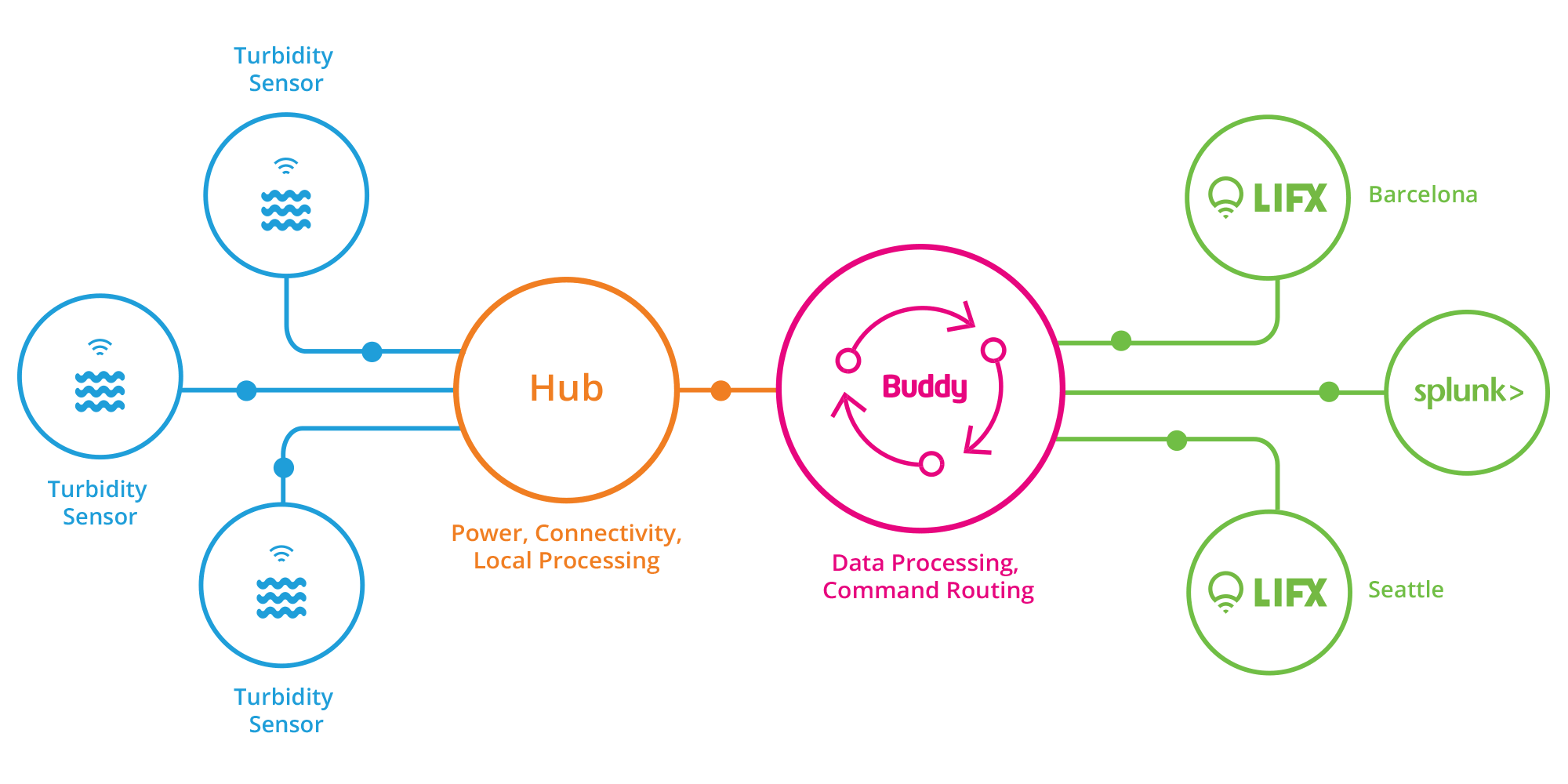To some, IoT data is seen as superfluous. Events with disastrous impact are surfacing all around us and coming to a head. The contaminated drinking water in Flint, poisoned water from fracking in New York and Pennsylvania, continued e. coli and listeria break outs in Massachusetts, or air quality issues in Oregon — these problems could have been predicted or in some way contained if IoT technology had been implemented.
If air quality sensors were as inexpensive and easy to install as LED garden lights, how many homeowners would be willing to place them in their yard and contribute to an early warning system for abnormal levels of pollution? And if micro-thermometers could be packaged with meat and produce from the time of harvest to the time of consumption, how quickly would noxious foods and their origins be identified and mitigated?
McLauchlan believes there’s a real opportunity for IoT data to bring value to communities by predicting these events. He wants to start a conversation that will engage and ideally move other IoT and data solution providers into taking action. Fundamentally, he believes that people and positive social impact should be at the center of IoT value creation.
How could it work?

The Buddy demo uses water turbidity as a proxy for the overall water quality. A variety of other water quality characteristics could be measured using this same design. In their demo, data is captured from a turbidity sensor and displayed real-time on a dashboard. If the turbidity level crosses a certain threshold (for example, 100 NTU), the sensor alerts by changing the color of smart lightbulbs in two separate locations.
The demo can be broken down into the following key steps:
- Turbidity sensor is placed in water sample
- Data is collected, processed, and streamed real-time to Splunk
- As the sensor detects key thresholds, light bulbs change color indicating a threshold was met
- Data is compared against a data-set of water quality data provided by USGS
Flint and other cities need help from all sectors
McLaughlan admits that none of this is easy.
Sensor and beacon developers must work with product manufacturers to enable easy, low-cost data generation and transmission. Data collection, aggregation and processing platforms must be able to ingest the data, connect it to advanced software tools and make it accessible for in-depth analyses. And public agencies, policymakers, advocacy groups and scientific organizations must leverage the data in ways that increase our collective ability to prevent or minimize social crises.
This type of information supply chain can’t happen in a vacuum. It can’t be achieved through closed-door meetings, and it can’t be contained in a lab. It requires widespread participation and collaboration, but the incentives are clear. Businesses can profit. Public agencies can reduce the human and financial cost of health crises. And individuals can play a greater role in their own safety and well-being.
It will be exciting to follow up on IoT for Impact and the goal to create an information supply chain that would help confront—and in many cases prevent—human emergencies.






















